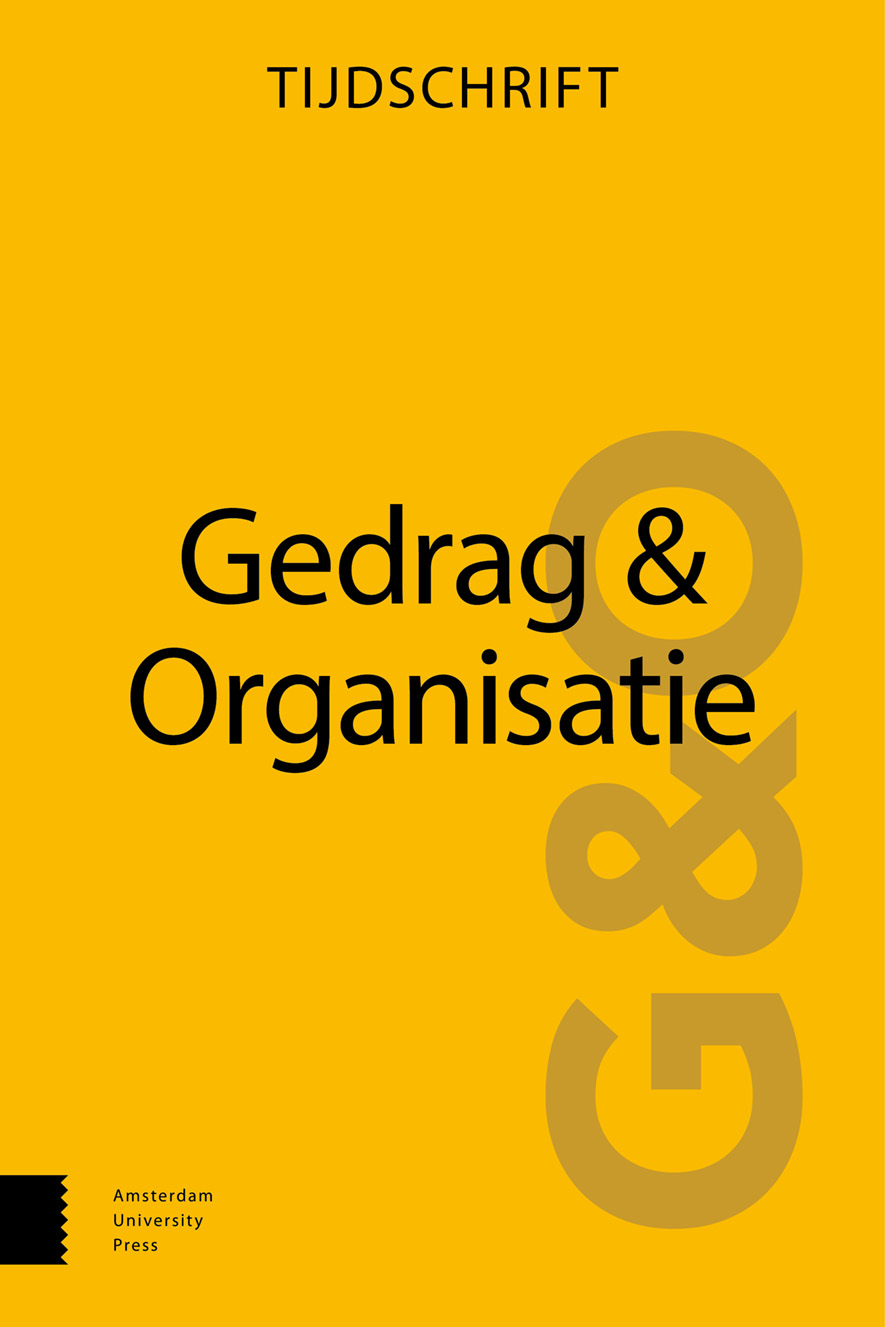- Home
- A-Z Publications
- Gedrag & Organisatie
- Previous Issues
- Volume 21, Issue 1, 2008
Gedrag & Organisatie - Volume 21, Issue 1, 2008
Volume 21, Issue 1, 2008
Language:
Dutch
-
-
oa De 'impact' van Gedrag & Organisatie
More LessGedrag & Organisatie gaat dit jaar haar eenentwintigste jaargang in, en is nu dus echt een 'volwassen' tijdschrift. Het gaat goed met G&O! Uitgeverij Lemma heeft de verzorging en druk van het tijdschrift uitstekend voor elkaar en de online beschikbaarheid van het tijdschrift is een grote vooruitgang. De samenwerking en coördinatie tussen redactie en uitgever verlopen soepel en er zijn plannen om G&O nog aantrekkelijk Read More
-
-
-
oa Werkkenmerken, welzijn en organisatieprestatie: een toets van de happy-productive worker-hypothese op organisatieniveau
More LessAuthors: Toon W. Taris, Paul J.G. Schreurs, Karin J.L. Eikmans & Pim van RietWork characteristics, well-being and organizational performance: an organizational-level test of the happy-productive worker hypothesis Work characteristics, well-being and organizational performance: an organizational-level test of the happy-productive worker hypothesis T.W. Taris, P.J.G. Schreurs, K.J.L. Eikmans & P. van Riet, Gedrag & Organisatie, volume 21, March 2008, pp. 3-18. The present study examined the associa Read More
-
-
-
oa Emoties en de intentie tot helpen van omstanders bij pesten op het werk: de invloed van waargenomen verantwoordelijkheid en besmettingsdreiging
More LessAuthors: Roelie Mulder, Mieneke Pouwelse, Hein Lodewijkx & Catherine BolmanEmotional and helping responses among bystanders of victims of mobbing: the role of perceived responsibility and threat of contagion Emotional and helping responses among bystanders of victims of mobbing: the role of perceived responsibility and threat of contagion R. Mulder, M. Pouwelse, H. Lodewijkx & C. Bolman, Gedrag & Organisatie, volume 21, March 2008, pp. 19-34 Building upon Weiner's (1995, 1996) attributional m Read More
-
-
-
oa De effectiviteit van oplossingsgericht werken en cliëntgeleide contractering bij coaching en advisering: lessen uit de psychotherapie
More LessAuthors: Coert Visser & René ButterThe effectiveness of solution-focused working in coaching and consultancy The effectiveness of solution-focused working in coaching and consultancy C. Visser & R. Butter, Gedrag & Organisatie, volume 21, March 2008, pp. 35-55 Until now, little research has been done on the effectiveness of organizational consultancy and coaching. This study aims to make a contribution to the knowledge development in this Read More
-
-
-
oa Investeren in employability: wiens verantwoordelijkheid?
More LessAuthors: Marijke Verbruggen, Anneleen Forrier, Luc Sels & An BollenInvesting in employability: whose responsibility? Investing in employability: whose responsibility? M. Verbruggen, A. Forrier, L. Sels & A. Bollen, Gedrag & Organisatie, volume 21, March 2008, pp. 56-73 Investing in employability is often regarded as a shared responsibility between employees and employers. In practice, however, not all employees and employers take up that responsibility. The Flemish government introduced a Read More
-
-
-
oa Een overzicht van het sociaal- en organisatiepsychologisch onderzoek in Nederland naar creativiteit en innovatie
More LessAuthors: Eric Rietzschel & Onne JanssenSocial and organizational psychological research on creativity and innovation in the Netherlands: an overview Social and organizational psychological research on creativity and innovation in the Netherlands: an overview E. Rietzschel & O. Janssen, Gedrag & Organisatie, volume 21, March 2008, pp. 74-87 This is the first article of a series about creative and innovative performance by individuals and teams. We aim to Read More
-
Volumes & issues
-
Volume 38 (2025)
-
Volume 37 (2024)
-
Volume 36 (2023)
-
Volume 35 (2022)
-
Volume 34 (2021)
-
Volume 33 (2020)
-
Volume 32 (2019)
-
Volume 31 (2018)
-
Volume 30 (2017)
-
Volume 29 (2016)
-
Volume 28 (2015)
-
Volume 27 (2014)
-
Volume 26 (2013)
-
Volume 25 (2012)
-
Volume 24 (2011)
-
Volume 23 (2010)
-
Volume 22 (2009)
-
Volume 21 (2008)
-
Volume 20 (2007)
-
Volume 19 (2006)
-
Volume 18 (2005)
-
Volume 17 (2004)
Most Read This Month
Article
content/journals/09215077
Journal
10
5
false
en


